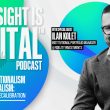by Hamlin Lovell, CFA, CFA Institute
It’s hard to beat some indexes. That doesn’t mean it’s hard to beat an index.
Ignore the knowing rhetoric from newspapers that come free with hotel rooms. Here is some research:
- Northill found that “focused” active managers outperformed in US equities, US fixed income, global equities, emerging market equities, and European equities.
- Principal Global found the average active small-cap manager has outperformed the Russell 2000 over a range of five-year periods.
So beating an index is at least not as hard as it seems. And as experienced investors know, there are markets where capital is better spent than indexed. London’s micro-cap Alternative Investment Market (AIM) index (ticker: AXX) has actually lost money over its 16-year lifespan. But many active managers specializing in AIM stocks have outperformed the index by considerable margins over the same period or during shorter intervals.
Active investing in smaller and earlier stage companies occurs more and more through private equity, venture capital, and even crowdfunding rather than public equity markets. And I have yet to hear anybody advocating a passive approach to investing in smaller and unlisted companies where the dispersion of returns is wide and failure rates can be high. A Cambridge Associates study showing that sector specialist private equity managers outperformed generalists suggests that a scattergun approach will backfire in private markets.
[dynamic-0012]A Bond Index Is a Funny Thing
The most indebted companies, industries, and countries have the largest weightings in credit indices. The credit quality of credit indices also fluctuates over time. Specifically, credit indices may have a pro-cyclical bias as they tend to have the highest weightings to lower quality credits when issuance is greatest. Issuance and opportunity are not always the same thing.
These structural concerns have been around since before bonds went negative. But today investing in government bond indices in developed countries — in Japan or much of Europe, for example — implies owning bonds with negative yields that will lose money if held to maturity.
Credit market investors have different motives. They are not all in the market to make a profit. Some market participants — central banks, for example — are not trying to make a profit at all. The same goes for certain passive managers and other benchmark-constrained managers like “closet trackers.” Whether they receive interest or “unterest,” they just need to own bonds.
Liability-driven investors like pension funds and insurance companies may own and continuously buy very low-yielding assets. Solvency regulations force these large market participants to purchase nominal and inflation-linked government bonds.
Unconstrained active managers — including the “focused” managers identified by Northhill — occupy quite a different habitat and might easily outperform these competitors. Separately, fees for active management of fixed income and credit are sometimes so low that (any) fee savings from passive products are smaller than the differences in fees between active and passive equity managers.
Considering all of this, it is no surprise that there have been 10-year periods when the median active bond fund beats its benchmark. Even in more specialized areas where higher yields are the norm, there have been multi-year intervals when some passive products lagged their indices.
Certain sectors of the credit markets offering higher yields — high-yield corporate bonds and emerging market bonds, for example — have also experienced years-long stretches when some passive products have lagged indices by more than their actively managed counterparts.
Many active credit managers claim to have avoided most defaults, and even default-free credit markets can be much less homogeneous than equities. A given corporate or convertible bond may have many issues that include subtly different features, such as call provisions, make-whole provisions, or takeover protection. Picking the wrong issue, say one trading above par with insufficient protection, could result in a capital loss if the bond is called.
The “no brainer” arguments for indexing oversimplify and ignore crucial jigsaw pieces for over-the-counter markets like fixed income. One critical and often overlooked puzzle piece: execution efficiency. Passive products that must remain close to 100% invested at all times may have little to no freedom in determining when to execute. They might constitute a captive market for those on the other side of the trade. This is often the case in frontier equity markets, according to Morningstar: “Index-tracking funds that invest in relatively illiquid securities face two key challenges — front running and market impact costs.” Such problems might be sidestepped by closed-end tracker funds that have a fixed pool of capital, but these funds can be prone to other difficulties: They may trade at extreme premiums over, or even at multiples of, their net asset value.
Inherently Active Strategies
For investment strategies like private equity, venture capital, and distressed debt, managers actively shape the destiny of their investments. For example, a distressed financial instrument can go through many incarnations over its life and follow multiple paths based on active decisions. These decisions could include whether to sit on a creditor committee, accept a debt-for-equity swap or restructuring proposal, or hold out in the hope of a better offer.
All of this can be labor and legal intensive, and I have yet to see a passive distressed debt fund or exchange-traded fund (ETF). Private equity and venture capital investors are nearly always actively involved as well.
Real Assets
Though investors can obtain ostensibly “passive” exposure to real assets by buying baskets of listed equities, this strategy often entails indirectly paying active management fees levied by the underlying companies or an extra layer of fees on the wrapper.
One investable property index is composed of a group of actively managed open-ended funds. So, in effect, it just involves diversifying among multiple funds without any saving on fees. Real assets, such as property and infrastructure, require active management. Property needs repairs, maintenance, and renovation. Tenants must be found and rents collected. Airports, electricity grids, water pipelines, and other infrastructure require active management to maximize their value.
Investors in asset-backed securities must consider the efficiency of servicing agents in dealing with delinquent and defaulted loans. This requires labor-intensive skills. Forestry and timberland also must be actively managed, trees tended, chopped down, and planted at appropriate times.
What’s the takeaway in all of this? Active fund management is alive, thriving, and adding value across trillions of dollars of assets worldwide.
Copyright © CFA Institute















